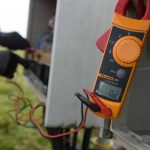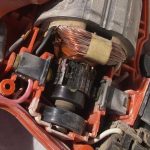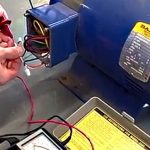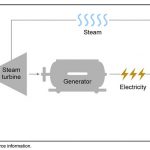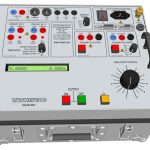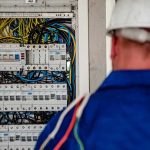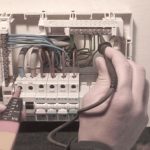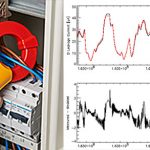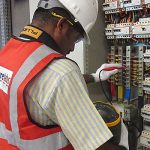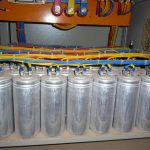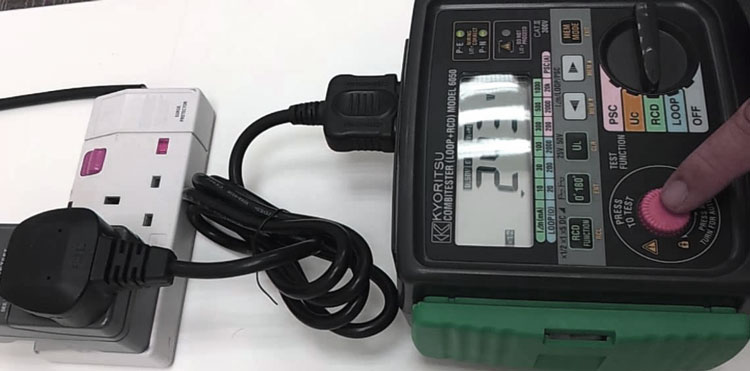
Residual Current Device offer a level of personal protection that ordinary fuses and circuit-breakers cannot provide. Residual Current Devices, or RCDs. are safety switches that prevent people from getting electrocuted in homes and businesses. The device monitors the flow of electricity as it enters a property from the main distribution panel. A surge of electricity, or an imbalance of electrical power, can cause injury or death. If an imbalance in electricity is detected, the switch automatically cuts off the electricity. The installation of at least two RCD Safety Switches in a building allows the electrical circuits to be evenly divided. That increases safety two-fold by preventing electrocution, and allowing some lights and power to remain on in the building.
Residual Current Devices are designed to protect against the risks of electrocution and fire caused by earth faults. For example, if you cut through the cable when mowing the lawn and accidentally touched the exposed live wires or a faulty appliance overheats causing electric current to flow to earth. RCD’s are very sensitive and will activate within 10 to 30 milliseconds stopping the flow of electricity.
Types of Residual Current Devices (RCD)
There are various types of RCDs that can be used to make sure you are always as safe as possible.
Fixed RCDs
These are installed in the consumer unit (fuse box) and can provide protection to individual or groups of circuits. A fixed RCD provides the highest level of protection as it protects all the wiring and the sockets on a circuit, and any connected appliances.
Socket-Outlet RCDs
These are special socket-outlets with an RCD built into them which can be used in place of a standard socket-outlet. This type of RCD provides protection only to the person in contact with equipment, including its lead, plugged into the special socket-outlet.
Portable RCDs
These plug into any standard socket-outlet. An appliance can then be plugged into the RCD. They are useful when neither fixed nor socket-outlet RCDs are available but, as with socket-outlet RCDs, they provide protection only to the person in contact with the equipment, including its lead, plugged into the portable RCD. Portable RCDs are plugged into a fixed socket and are suitable for monitoring appliances in high-risk areas such as workshops, outdoor areas or damp locations. They should be used where RCD protection is not already provided or is unknown.
What RCD Testing Regulations Apply?
RCD Regulations UAE indicate that the company must have at least two residual current devices connected to the main switchboard. However, compliance regulations could vary based on the size of the building and the current flowing to each section of it. If regulations aren’t followed, the company could incur a fine of a decent amount.
Are RCDs Reliable?
We’ve found that fixed RCDs are about 97% reliable. This improves if they are tested regularly. If you have fixed RCD protection, it will reduce the risk of electric shock to you and your family. It can also protect your home against the risk of fire caused by faulty wiring or appliances.
Remember – Although RCD protection reduces the risk of death or injury from electric shock it does not reduce the need to be careful. Have your wiring checked at least once every 10 years to ensure the safety of you, your family and your home. If you find a fault with your wiring, or an appliance, stop using it immediately and contact a registered electrician.
Don’t forget to test – You should test all fixed and socket RCDs about every three months. Manufacturers recommend that portable RCDs are tested every time you use them.
How Often Should RCD Testing Occur?
RCD testing has to be completed every three months, and documented, to remain in compliance. There is a test button on the device that has to be pressed to determine if the switch is working correctly. It is working properly if the power goes off. If the power does not go off, an electrician has to be called to re-test the switch, repair it, or replace it. It is strongly recommended that all homeowners, even those not selling the property have the devices installed for safety. The cost of installing residual current devices is nominal, especially compared to the safety of family members. In order to remain compliant to the standard, you will need to comply with the above test intervals in the section above.
One of the most common problems that we see in our country is that everyone is busy and it’s very easy to miss these dates and not be compliant with the standards. We can help you by taking care of this responsibility for you. The Carelabs team will send reminders of your RCD renewal coming due, several weeks before the renewal is due, to ensure you are always compliant at your premises
How Much Will RCD Protection Cost?
A plug-in RCD can cost as little as 120 AED. A fixed RCD will cost more, but will provide a greater degree of protection to help keep your family and working environment safe. Installation costs will vary, so we recommend getting several quotes before proceeding.
Why Test Residual Current Devices?
Some electrical appliances and old wiring may have a normal small amount of earth leakage which can trip a RCD. Earth leakage increases with each additional electrical appliance that is plugged in, and if RCD keeps tripping out it may be an overloaded circuit. Any faults we recommend that you have your wiring and appliances checked by an electrician to ascertain the fault if a RCD keeps tripping.
The majority of electrical fatalities could have been prevented by the use of a properly installed RCD, and regular testing to ensure they are working correctly. RCD’s also protect against fire caused by faults in appliance, tools and wiring. If these faults go undetected they could cause a fire or personal injury. RCD’s provide a means of early fault detection.
Thermal Scanners is able to carry out all your RCD Testing requirements and upon completion, issues you with a Comprehensive Report and Compliance Certificate. If maintained correctly an RCD can not only help to prevent fire due to appliance or wiring faults, they save lives. Thermal Scanners help clients to ensure their RCD’s are compliant and tested in line with the UAE Standards.
What is Done During Testing of RCD?
RCDs must be tested. The requirements are stated in the following Regulations:
- The effectiveness of the RCD must be verified by a test simulating an appropriate fault condition and independent of any test facility, or test button, incorporated in the device (Regulation 713-13-01)
- Where an RCD of 30mA provides supplementary protection the operating time must not exceed 40 ms at a residual current of 5 I∆n. (Regulation 412-06-02 refers)
Tests are made on the load side of the RCD between the phase conductor of the protected circuit and the associated cpc. Any load or appliances should be disconnected prior to testing. RCD test instruments require a few milliamperes to operate; this is normally obtained from the phase and neutral of the circuit under test. When testing a three-phase RCD protecting a three-wire circuit, the instrument’s neutral is required to be connected to earth. This means that the test current will be increased by the instrument supply current and will cause some devices to operate during the 50% test, possibly indicating an incorrect operating time. Under this circumstance it is necessary to check the operating parameters of the RCD with the manufacturer before failing the RCD.
The RCD Testing Requirements indicate that a manager is required to test each device every three months. To conduct these tests, they must present the test button found on the residual current device. The RCD Testing results determine if the device is worked correctly. After each test, the manager must reset the device by pressing the appropriate button.
If at any time the test indicates that it isn’t operating properly, the manager must order a new device and shut down power to the location. They must tag and lock the device in the location in which it is used. This notifies workers of an existing issue and prevents them from using any connections running to it.
How are RCDs Tested?
The wiring regulations require the residual device providing additional protection to disconnect within 40 milliseconds when tested at 5 times the current they are designed to operate within normal circumstances. This is something electricians test using calibrated equipment and not something the homeowner can do. It is one of the tests carried out during an electrical inspection and confirms if the RCD would disconnect in the necessary time to prevent shock. Other tests confirm the device(s) are not oversensitive that would leave you without power unnecessarily. If you are not sure when the rcds within your installation have been tested, get in touch to make an appointment for me to test them for you. When RCD tests are carried out, it will trip the RCD and disconnect the circuit that it protects, so any electrical equipment will need to be turned off prior to RCD Testing being carried out.
Each RCD Test only takes approximately 5 minutes for each RCD. We suggest that RCD Testing is carried out after hours, before the office opens, or you will need to advise your staff that the power will be disrupted for each circuit, and that there computers will need to be turned off.
All electrical equipment needs to be turned off when RCD Testing is carried out.
Operating Time Test
Performed by an electrician, this test measures how long the RCD takes to trip, indicating whether it is fast enough be effective.
Push-button Test on RCDs
The push-button test is to ensure that the RCD will trip when there is an earth leakage, and break the electrical circuit protecting the individual from suffering an electric shock, or electrocution. When you press the test button, and the RCD has detected an imbalance, the on/off switch will jump to the “off” position. The test button will only test the RCD if an electricity supply is connected. This test should be performed daily or before each time you use the RCD – whichever is the longer. However it is not particularly accurate and should never be relied on as a reliable assessment of the RCD working correctly. The “trip time” test using the “applied current” method is a far more accurate means of testing RCDs and is a required test under AS/NZS 3760.
Trip Time Test
It measures the actual trip time and must be performed with equipment able to measure this to within +/- 8 ms (0.008 of a second).This is a simple test that can be performed by the user, to determine that the RCD’s tripping mechanism is working.
Portable RCDs
Portable RCDs requires the use of an isolation transformer to carry out operating time test.
Follow these simple steps to ensure your RCDs are operating correctly:
- Plug a small lamp into a power point and make sure it works. Leave it turned on.
- Make sure that electricity is connected to the property and the main switch is in the “on” position. The lamp should be on.
- Turn off all electronic equipment (computers and televisions) etc.
- Push the test button on each RCD. Do not hold your finger on the test button. The RCD should operate (turn off). If it does not operate, it must be checked by an electrical contractor.
- After pushing the test button and the RCDs have turned off check that the small lamp is now off. Also check that all the lights and power points do not operate. To do this, plug the small lamp into all the power points and turn the power point on. If the lamp turns on, a licensed electrical contractor must be engaged to correct the wiring.
- When finished testing, turn the RCDs back on and check that the lamp works when plugged into a power point.
Who can Carry out the Testing of an RCD?
Clause 62C of the OHS Amendment (RCD) Regulation 2011 requires that RCDs are push button test that can be carried out by a person that has been instructed on how to use the built-in test push button and second test involves testing the operational performance of the RCD that measures the tripping time and tripping current. This type of testing needs to be carried out by a person who is trained in the use of an RCD tester. This could be a person that has been trained to use an RCD tester or an electrically qualified person such as an electrician. For some test activities where it may be necessary to access the supply distribution switchboard the testing could only be carried out by a licensed electrician. Further guidance on RCD testing methods can be found in the Standard AS/NZS 3760 In-service inspection and testing of electrical equipment.
Recording the Results of Residual Current Device Testing
The owner of the RCD must keep records of RCD testing, except for the daily push button testing of portable RCDs. The OHS Regulation requires that a record is made and kept of all inspections, tests and maintenance carried out on electrical equipment. The employer is to ensure that the following information is recorded in relation to RCD testing,
- The name of the person who carried out the RCD test
- The date on which or the dates over which, the RCD test was carried out
- The result or outcome of the RCD test, and
- The date by which the next RCD test must be carried out.
Records can consist of documents, logbooks, asset registers or a computerised database. They should be located conveniently so that managers, employees and employee representatives can access the information. Carelabs inspectors have the right to examine the records of employers, which are required to be kept by the OHS Regulation.
Benefits of RCD Testing
A tested RCD can help put your mind at ease when it comes to the safety of your workers. RCD testing performed by a qualified professional can ensure that your RCDs have no faults in them and can be relied upon to function when needed. Some other benefits of RCD testing are:
- Compliance with safety standards
- Cost savings
- Early detection of faults

